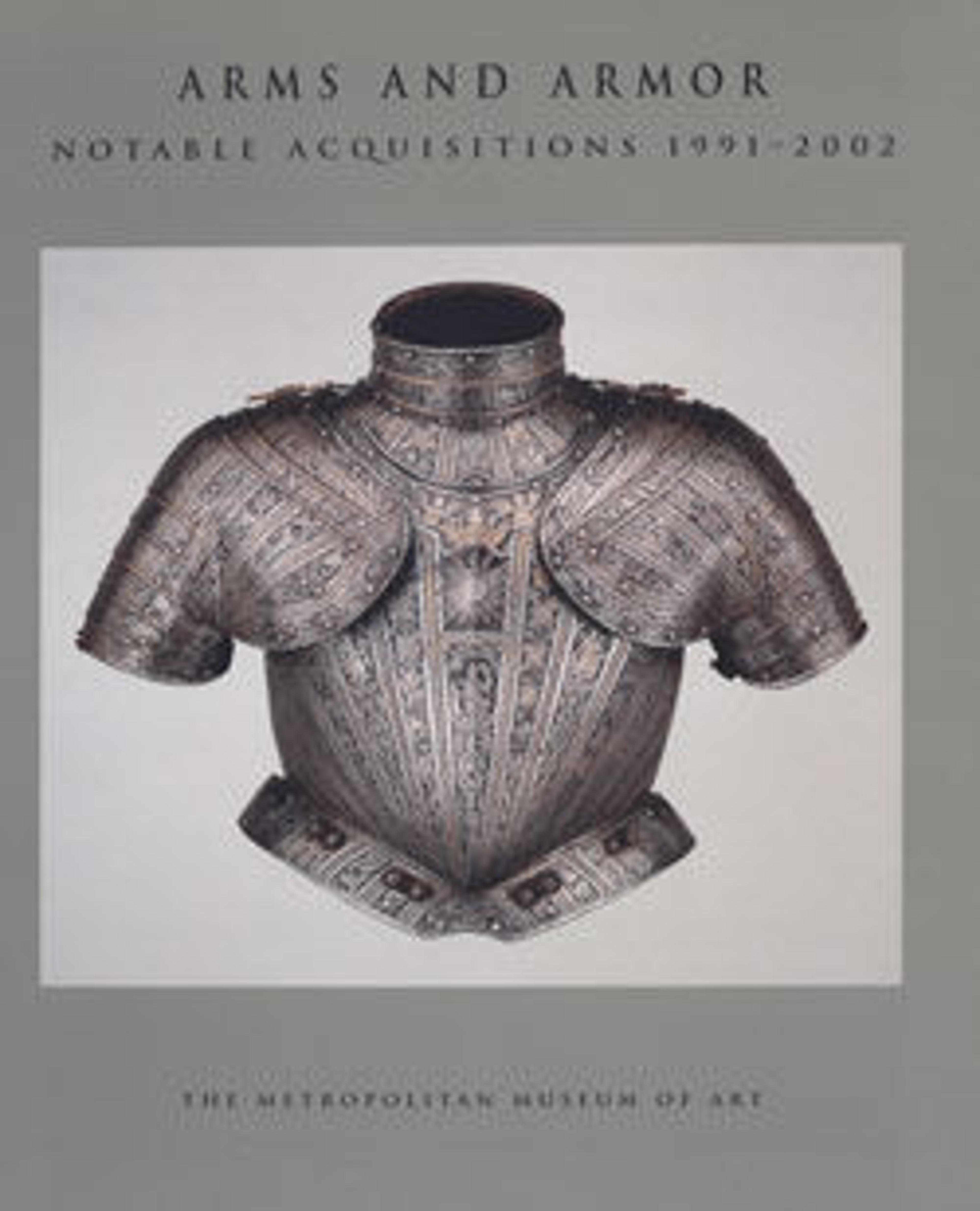Saddle (Kura)
Japanese saddles are distinguished by an ingeniously simple method of construction combined with a virtually inexhaustible range of decorative motifs. The construction consists, typically, of only four pieces of skillfully shaped wood, which are held together by mortise-and-tenon joints and fastened in place by hemp or leather lacing. The surfaces are covered in Japanese lacquer (urushi) and often incorporate designs in gold or silver and inlays of ivory, mother-of-pearl, or abalone shell.
This saddle is a particularly fine example of black-and-gold lacquer with extensive abalone-shell inlay. It is especially distinctive as it is possibly the only example with inlay of this kind that is signed, dated, and made for a known family. The underside is marked with the as-yet-unidentified kao (seal or monogram) of the saddle maker and with the date Meireki yon sai (equivalent to 1658). The outside of the pommel and cantle is decorated in gold with the mon (heraldic insignia) of the Nishio family, daimyo of Yokosuka, in present-day Shizuoka Prefecture. Delicate inlay covers much of the saddle and features designs of billowing waves (seikaiha) and round blossoms set among lush scrolling vines (karakusa).
This saddle is a particularly fine example of black-and-gold lacquer with extensive abalone-shell inlay. It is especially distinctive as it is possibly the only example with inlay of this kind that is signed, dated, and made for a known family. The underside is marked with the as-yet-unidentified kao (seal or monogram) of the saddle maker and with the date Meireki yon sai (equivalent to 1658). The outside of the pommel and cantle is decorated in gold with the mon (heraldic insignia) of the Nishio family, daimyo of Yokosuka, in present-day Shizuoka Prefecture. Delicate inlay covers much of the saddle and features designs of billowing waves (seikaiha) and round blossoms set among lush scrolling vines (karakusa).
Artwork Details
- Title: Saddle (Kura)
- Date: dated 1658
- Culture: Japanese
- Medium: Wood, lacquer, abalone shell, gold
- Dimensions: L. 14 1/2 in. (36.8 cm); H. 10 3/4 in. (27.3 cm); W. 15 in. (38.1 cm)
- Classification: Equestrian Equipment-Saddles
- Credit Line: Purchase, Morihiro and Sumiko Ogawa Gift, in memory of Dr. Sato Kanzan, 2000
- Object Number: 2000.405
- Curatorial Department: Arms and Armor
More Artwork
Research Resources
The Met provides unparalleled resources for research and welcomes an international community of students and scholars. The Met's Open Access API is where creators and researchers can connect to the The Met collection. Open Access data and public domain images are available for unrestricted commercial and noncommercial use without permission or fee.
To request images under copyright and other restrictions, please use this Image Request form.
Feedback
We continue to research and examine historical and cultural context for objects in The Met collection. If you have comments or questions about this object record, please contact us using the form below. The Museum looks forward to receiving your comments.
